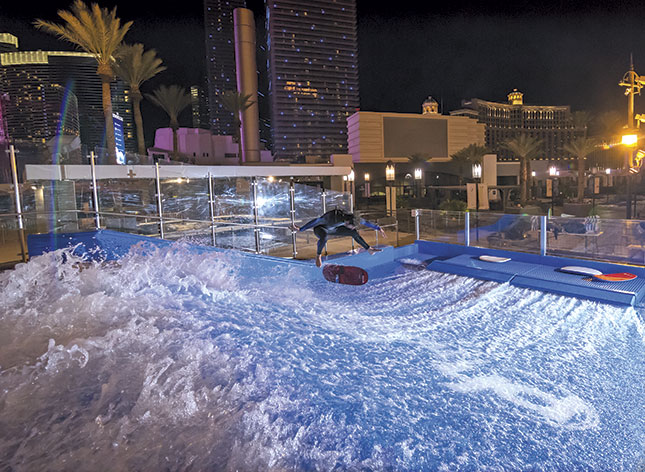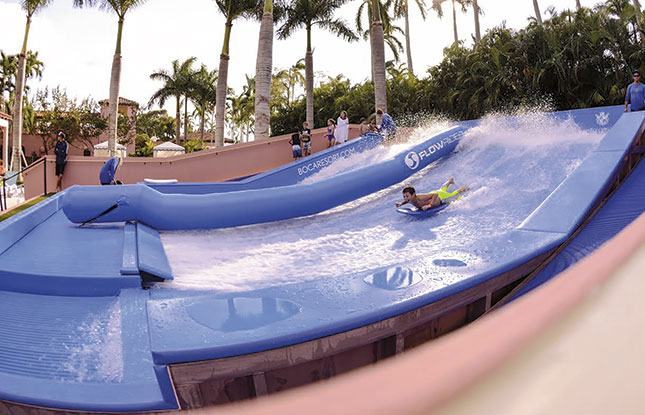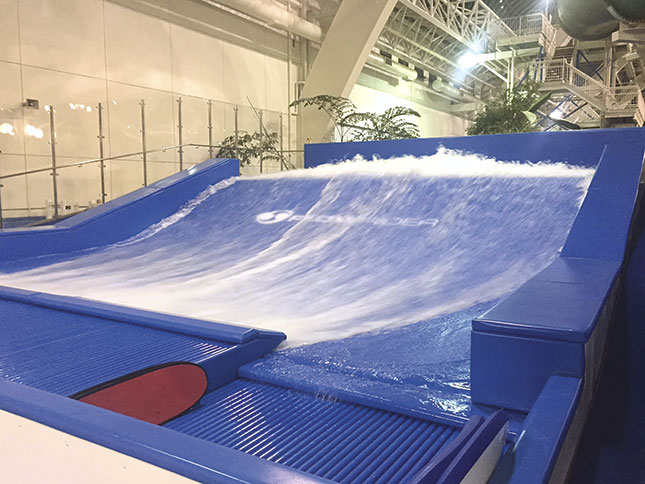Flow rates capable of exceeding 108,000 gallons per minute power the FlowRider sheet wave surf pool.
07/01/2015
Since the early 1960s—when the Beach Boys produced a string of surfing records that struck a chord with people around the world—surfing has become a popular sport and pastime for millions. While surfing year-round was once limited to California or Hawaii, modern pumping technology makes this pastime a possibility virtually anywhere.
 Image 1. Planet Hollywood Resort and Casino, Las Vegas (Images courtesy of White Water West)
Image 1. Planet Hollywood Resort and Casino, Las Vegas (Images courtesy of White Water West)How it Works
The FlowRider's sheet wave is created by pumping very high volumes of low-pressure water up a suspended flexible membrane surface that mimics the form and shape of a wave. Pumping the water up and over the ride surface provides a 1.5- to 3-inch continuous flow of water that can be used for surfing on a flow board or body board. The actual height of the wave form is about 5 feet from top to bottom, and the entire surface is between 20 and 30 feet wide. Image 2. Boca Raton Resort and Club, a Waldorf Astoria Resort
Image 2. Boca Raton Resort and Club, a Waldorf Astoria ResortMeeting the Demand
Because the FlowRider requires continuous operation, many parks have selected submersible pumps that are also used in a variety of demanding storm water, municipal and other water transport applications. One particular submersible pump used in the FlowRider attraction has a flow rate capable of exceeding 108,000 gallons per minute (GPM), which is ideal for the large volumes of water pumped by the ride. If the flow rate and volume of water drops, then the wave will not form sufficiently for riders. Unlike some other submersible pumps, the pumps used in the FlowRider can be mounted horizontally in the water containment tank below the ride surface and can withstand a high concentration of chlorine and other chemicals. For White-Water and ADG, this pump also offers several key benefits regarding installation and operation. Because the weight of the pumps ensures self-centering seating in the discharge tube, the pumps are relatively easy to install. Similarly, the lack of anchoring or anti-rotation elements allows for quick installation and hassle-free removal. The pumps are also hydraulically optimized, providing a low-vibration hydraulic system with inlet ribs and optimized bellmouth for vortex-free inflow. Image 3. West Edmonton Mall, Canada
Image 3. West Edmonton Mall, Canada
